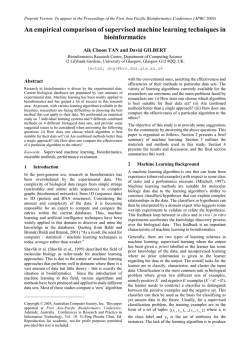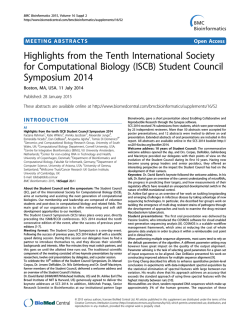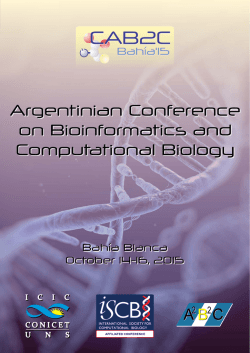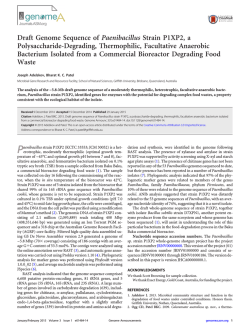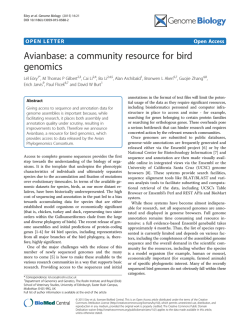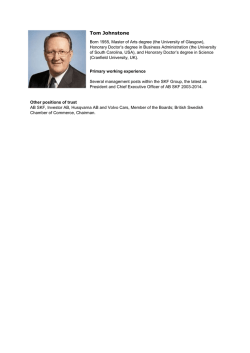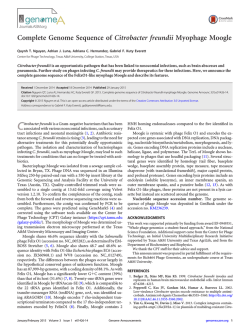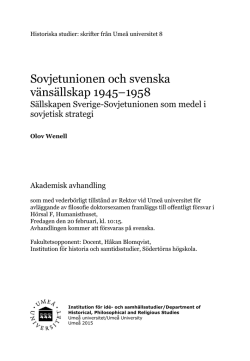
INTERNATIONAL COURSE ON
INTERNATIONAL COURSE ON “INTRODUCTION TO BIOINFORMATICS 2016” Punta Arenas, Región de Magallanes y la Antártica, Chile 3-8 October, 2016 www.inach.cl www.umag.cl www.deann.eu www.embnet.org http://sgbc.slu.se General Description The course aims to introduce the students on basic methods of bioinformatics. It will cover several computer-based methods for analysis of DNA and protein sequences. The topics to be covered include: the Unix operating system, biological databases - NGS technologies - web-based tools for genome analysis – a desktop based bioinformatics tool. After completion of the course, the student should be able to: - understand some basic principles of bioinformatics - independently carry out comparisons of protein and DNA sequences, and to interpret the results - work with Genome browsers - work within Unix/Linux operating systems - take home and use a Free Open Source software tool - use and understand biological databases - work and handle NGS sequence data Course Organizers: Marcelo González (Instituto Antártico Chileno) Cesar Cárdenas (Instituto Antártico Chileno) Pamela Santibáñez (Instituto Antártico Chileno) Marcelo Navarrete (Universidad de Magallanes) Yolanda Espinosa (Universidad de Magallanes) Instructors: Hadrien Gourle and Erik Bongcam-Rudloff (Swedish University of Agricultural Sciences, SLUGlobal Bioinformatics Centre). Hadrien Gourlé is a belgian bioinformatician at the SLU-Global Bioinformatics Centre (SGBC), which is part of the Core Facility at SLU, an academic research and educational initiative aimed to build a long-term successful bioinformatics infrastructure facility that serves the Swedish University for Agricultural Sciences (SLU) and life science research communities worldwide. Actually, he is PhD-student at the Swedish University of Agricultural Sciences. His PhD is about assessing the anthropogenic impact on West Indian Ocean coral reefs. Erik Bongcam-Rudloff is a Chilean-born Swedish biologist and computer scientist. He received his doctorate in medical sciences from Uppsala University in 1994. He is the head of SLU-Global Bioinformatics Centre at the Swedish University of Agricultural Sciences. His main research deals with development of bioinformatics solutions for the Life Sciences community. He is the chairman of EMBnet, a science-based group of collaborating bioinformatics nodes throughout Europe, and a number of nodes outside Europe. He is also the coordinator of the EU-Horizon2020 B3Africa project. Program Day one 3 October Welcome Message Inaugural Speech and Ice-breaker. Introduction to Unix During this session you will learn the basics of *NIX operating systems, about the file system and how to navigate. How to create and erase files and directories, how to communicate to other computer systems using the command line and many other essential basics necessary for the analysis of big data amounts. Day two 4 October Introduction to bioinformatics An introductory lecture to explore the exiting possibilities that Next Generation Technologies offer to today Life Science researchers and students. Introduction to biological databases ENA, Uniprot, Interpro, Swissprot etc etc. You will learn about the differences between manually and automatically curated DBs. You will learn about different biological databases, when to use them, their limitations/advantages and much more. Day three 5 October Introduction to Ensembl and other genome Browsers This day you will learn how to explore some of the leading genome browsers and get examples how to annotate your own projects. Ugene: graphic user interface Ugene is a graphical based bioinformatics workbench that connects to hundreds of bioinformatics tools: EMBOSS, Clustal, MUSCLE, T-Coffee, BLAST, HMMER3 Raw DNA –Seq processing, Assembly of NGS data, Map reads to reference etc. Day four 6 October Introduction to protein analysis This day you will learn how to search patterns, profiles, homologies, multiple sequence alignment. Secondary structure prediction, basic 3D visualization. Day five 7 October NGS introduction You will the fifth day to get acquainted with the analysis of Next Generation sequencing data. You will use the World leading web-based Galaxy system. You will work with sequence data; do quality control, basic manipulation of data, whole genome assembly among other things. Tutorial Galaxy Day six 8 October NGS, RNAseq The last day you will learn how to process RNAseq data using most of the classic RNAseq analysis tools. Gala Dinner Locality: Universidad de Magallanes and Edificio de Laboratorios Antárticos “Embajador Jorge Berguño”. Punta Arenas, Chile. The course will be in English with some Spanish support Supported by EU DEANN, EMBnet, SGBC-SLU, INACH, UMAG.
© Copyright 2025
